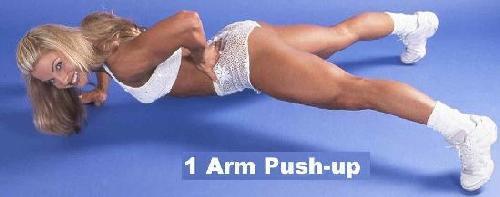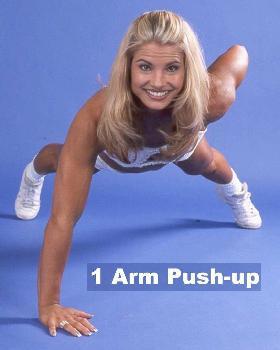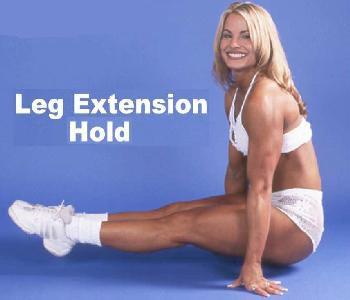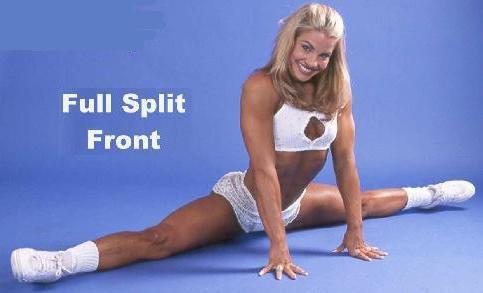| National Physique Committee (NPC) Rules and Guidelines for Judging Competitions |
|
Attire During the prejudging a solid color suit will be worn. Suits of metallic nature are not allowed. There will be no "T" suits or "G" strings worn. The style of suit that will be worn at the actual competition must be worn at the weigh-in especially at all National competitions. No jewelry or hair ornaments will be allowed at either prejudging or the evening competition. Numbers will be on the left side of the suit. Judging-elimination round If there are more than 15 competitors in an individual weight class the elimination round will be done. All the competitors will be brought out as a group. Quarter turns will be done so the judges are able to see the overall level of competition. They will then come back in groups of 5 to perform the compulsory poses. At this time the judges will be deciding the top 15 competitors by placing an "X" next to a competitors number. No actual placings are given during this round. After all the competitors have performed the compulsory poses the judges sheets are collected. The 15 competitors with the most "X"'s are the ones that will make up that weight class. Presentation Round Each of the 15 competitors will come back individually to perform their posing routine. This will be limited to 60 seconds with a 10 second warning given during the prejudging. No music will be used at the prejudging. 90 seconds will be allowed at the evening show. During this round the judges will be focusing on how well the contestant is able to "present their physique" - showing both muscular and symmetrical development.(See judging criteria, presentation) The moon pose has been banned by the NPC and the IFBB and will not be allowed at either phase of the competition. If it is done it will result in immediate disqualification from that competition. Muscular Development After each contestant has finished their routines the contestants will be brought out as a group in numerical order. At this time the head judge will call them out in groups of 3-4 or 5 and direct them through the compulsory poses. There are five for the women and seven for the men. The judges will take this time to assess muscular development(See Judging criteria, Muscular development). The side chest and tricep pose may be done from either side.
During the entire prejudging the judges should be looking at the competitors symmetry. This refers to the proportion, shape and balance of muscle(See judging criteria - General Assessment). After all the competitors have done the compulsory poses,the judges may ask to see certain competitors together for comparisons. Judges are allowed to ask to see only certain poses or may ask to see a pose that is not part of the compulsory poses but which they feel they need to see in order to place these competitors.(ex. Lat. Spread for a female competitor). When all the comparisons are completed and the judges are satisfied, the line up is dismissed. The judges than mark their score sheet, consisting of a single placing for each competitor based on all three rounds. The total package should always be considered. The Head Judge will then collect the judges sheets and make sure no judges have made duplicate placings. The next weight class is then called out. Evening show The competitors are introduced either as a group or individually depending on the competition or as they perform their routines. The time limit is 90 seconds with music. No jewelry, hair ornaments or props are allowed Posedown The Head judge will supply the emcee with the finalists. The emcee will call out the finalists in numerical order. There will be a few minutes of free posing allowed for the audience but no actual judging is done at this time. The emcee will announce the final placings starting with 5th or whatever the last place is and work up to first place. The trophy is awarded as the place is announced. Scoring When scoring the placement system is used. Each round will be considered of equal importance, however only one score will be marked on the judges score sheet for each contestant Stress to the judges that their final placing for each competitor is a reflection of the combination of all three rounds. Notes should be kept on each competitor so that a judge can tell a competitor where they excelled or where improvement is needed When adding all the judges scores, the high and lows are discarded. The remaining scores are added together. The contestant with the lowest score wins and the rest are placed accordingly. To determine the relative placing find out who was scored the best by each of the judges. In the above example Competitor #1 was scored better by Judges 1,2,3,and 6 (A total of 4 judges). Competitor #2 received better scores from judges 4,5,and 7(A total of 3 judges). Since Competitor #1 had more judges score her higher(4 to 3), she receives the higher place. Overall Posedown Each Weight Class Winner advances into the Overall Posedown. The Head Judge guides them through the quarter turns then the compulsory poses and then they are given 2-3 minutes of free posing with some background music. While the free posing is being done the judges should mark their sheets placing the competitors from 1 to 3 or 5 and give their sheets as quickly as possible to the head judge so the scores can be tallied. The judges scores are compiled and the highs and lows discarded. The remaining scores are added together. The competitor with the lowest score is the overall winner. Mixed Pairs Judging Procedure Follow the same procedure that you used for the individual judging. The only variations are:
The Scoring procedure is the same.
The sport of bodybuilding represents the balanced musculature development of the physique. The quality of this development is determined by the overall assessment of these three related areas:
It is imperative to remember that each category has a scoring value of one third. Each round must be given equal value in determining a competitor's placing. The judges will submit one final placing score for each competitor after the completion of all three rounds. With this in mind let's begin with Presentation Round. Presentation Round Presentation is the display of all muscle groups with emphasis on the competitors most developed and defined areas, by means of poses showing muscular development and aesthetic lines joined together by transition poses. Each pose displaying muscular development should emphasize one or more muscle groups and must be held momentarily in order for a judge to assess properly. If the pose is not held it should be considered a transition move. A transition is the poised movement from one pose to another pose Gymnastics and dance may influence this portion of the posing since transitions involve the physique in motion. Posing is an art form that almost always stands by itself, independently of the quality of the physique. Therefore we call this round Presentation, which is really short for "Presentation of the Physique". The rest of this phrase is the key in which you as a judge should not overlook Later in the compulsory round the judges will be Saying "Ok, show us your physique' the way we want to see it". In this round the competitors take charge saying "I'm going to make you look at my physique the way I want you to". Performing their own, carefully designed free posing routine gives the competitor a chance to make the judges see what they want seen and over look what they want overlooked. Judges must be extremely careful in this round not to be impressed by an underdeveloped competitor who is a great dancer or gymnast nor by a competitor who has a good physique but is awkward and does not present their physique to its best advantage. Questions you should be asking yourself as you judge are:
Remember there is a time limit of one minute for all competitors during the prejudging and 90 seconds in the evening. Muscular Development Compulsory Round Muscular development is the balanced development between the musculature displaying density, separation and definition of the muscle groups
You, as the judge, should be looking for muscular density that has been achieved through training, giving the muscles a full healthy look. There should be a balanced development of muscle groups in relation to each other. Beware of the influence of one particular muscle group that may appear large in comparison to the other groups For example, large deltoids may stand out in a line-up, but you must determine if they are in balance with the rest of the physique. If the deltoids appear to be too large, then that indicates that the other muscle groups have not yet reached the same level of development as the deltoids. Another example, the lack of abdominal development is an absence of an entire muscle group. In other words, the judge must look for good development of all muscle groups. At the same time it must be balanced and equal development of the major muscle groups. Judges message concerning female bodybuilders "Judges must look for muscular femininity which means a woman bodybuilder should have female looking muscles. It is the over-development of male-size muscles on women that the IFBB is against, and female bodybuilders who display this type of physique should lose points. Judges must ask themselves the question whether the athlete locks like a woman and has the muscles of a female bodybuilder. Bigger is not necessarily better in this instance. 'When a judge looks at a female bodybuilder, he or she must have no doubt in their minds they are looking at a woman." Muscular separation and definition should also be apparent from training and proper diet, not from starvation and lack of training that results in a stringy look to the muscles. Again, as a judge, you should determine if the overall physique you see on stage displays balanced density, separation and definition only achieved through the combination of both proper diet and training. Do not be impressed by definition of "stringy" looking muscles. Hardness is the degree of firmness presented by the muscles, how much of their size is due to components other than muscle tissue (fat, water etc.) and how good is the muscle tone. If the female athlete's thighs or glutes "wiggle" when she walks, her hardness is definitely of minimal degree. The compulsory round is governed by 5-7 poses:
It is the responsibility of the competitor to flex all muscle groups to be displayed. If the muscles are not flexed, you can not assess them. For example, if a competitor does not flex their legs you will not be able to score them as high as another competitor. General Assessment - Symmetry Proportion, shape and balance of the musculature in a relaxed state, taking into consideration the overall bone structure, is in essence the definition of Symmetry.
Facing Forward Take this chance to assess the overall silhouette of the physique. Then start to look at each of the bodyparts.
Facing Sideways
Facing Backward
During all four quarter turns, the judge must also look at the general appearance, posture and athletic bearing. As well as skin tone, skin texture and quality, skin color tone and evenness, blemishes, stretch marks, scars, tattoos, cellulite, skeletal defects and proper application of oil, etc. Strong emphasis is placed on the overall appearance of the physique. An analogy that seems to summarize what we are looking for in the General Assessment Round is that of assessing a diamond. When you determine the purchase value, the quality is based on the stone's cut, color and reflective capabilities. But your final decision of whether or not to buy the stone is based on the diamonds overall appearance. This is either bad or good, depending upon the sum total of its three characteristics. If the stone is lacking in one or more of the three areas, you must decide whether it is worth the investment. Just as you, the judge, must decide the quality of the competitors in the General Assessment Round according to the three characteristics of: Proportion, Shape and Balance. |
|
NPC Rule Changes 2002 |
|
|
NPC Rule Changes 2001 By Jim Manion - NPC President |
|
|
NPC Fitness Rule Changes 1999 |
|
|
|






